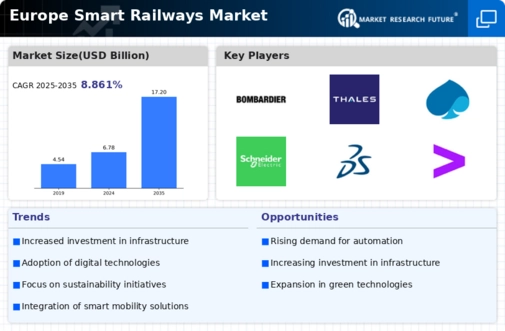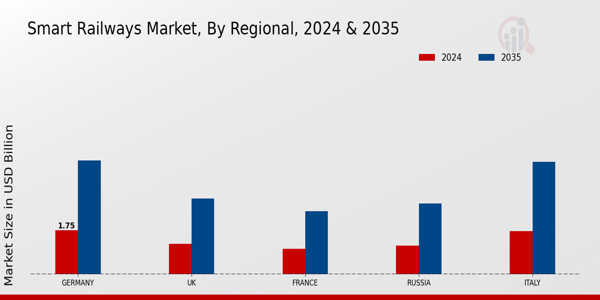The Europe Smart Railways Market is characterized by significant advancements in technology and innovation aimed at enhancing the efficiency and safety of rail transportation systems. As European nations focus on modernizing their infrastructure to meet the growing demand for sustainable and reliable public transport, the competitive landscape has become increasingly dynamic. Key players within this market are harnessing cutting-edge technologies, such as Internet of Things (IoT) applications, advanced signaling systems, and automated operations to create smarter, more integrated railway networks.
This transformation is driven by both governmental initiatives and the pressing need for reduced carbon emissions, making the competitive insights essential for understanding market trends, strategizing partnerships, and identifying growth opportunities across the continent.
Bombardier has established itself as a prominent player within the Europe Smart Railways Market by leveraging its vast expertise in rail technology and extensive product portfolio. The company's strategic presence throughout Europe allows it to offer innovative solutions that cater specifically to regional transportation needs. Bombardier's strengths lie in its engineering excellence and its commitment to sustainability, which have shaped its reputation as a leader in the mass transit sector. The company excels in providing high-performance trains, including modern light rail, commuter, and high-speed train systems that are designed to enhance operational efficiency and passenger experience.
This strong foothold in Europe has enabled Bombardier to respond promptly to market demands and position itself as a trusted partner for both public transport authorities and private operators.
Thales operates as a key player in the Europe Smart Railways Market, delivering advanced solutions that enhance safety, security, and operational efficiency within the rail industry. The company offers a diverse range of services and products, including signaling systems, telecommunications, and cybersecurity solutions that are critical for the smart railway infrastructure. Thales's market presence is bolstered by its robust focus on technological innovation, particularly in the area of smart signaling systems, which improve traffic management and enhance the reliability of rail services.
With a series of strategic mergers and acquisitions, Thales has expanded its capabilities within Europe, allowing it to combine expertise and create synergistic opportunities that strengthen its competitive positioning. The company's continuous investment in research and development further solidifies its commitment to meeting the evolving needs of the rail sector and contributing to the modernization of Europe’s transportation networks.























Leave a Comment